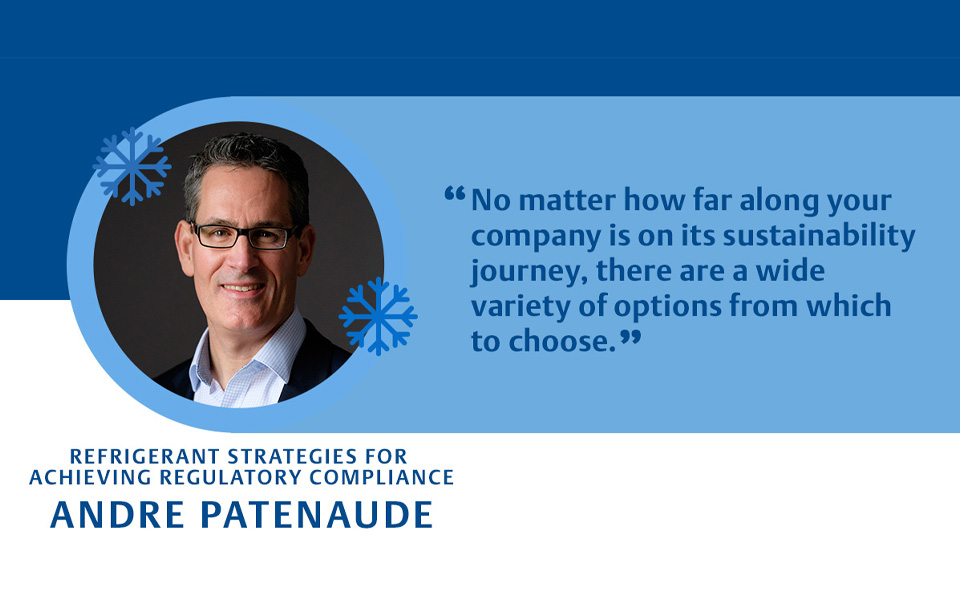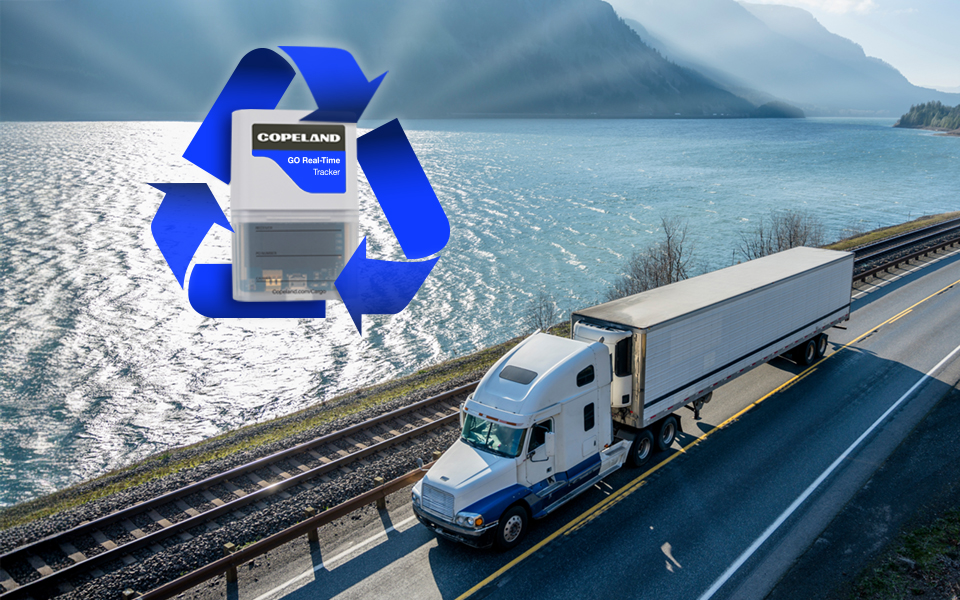*On June 1, 2023 Emerson’s Climate Technologies business became a new standalone company – Copeland. Though our name has changed, we are building on more than a century of HVACR innovation and industry leadership, and Copeland continues to offer the same products, industry stewardship, and learning opportunities you’ve grown to trust. Information found on this webpage posted before June 1, 2023 may contain our old name or branding, but you can be at ease knowing it was created with the knowledge and expertise of Copeland.
Choosing a refrigerant is one of the most important decisions facing food retailers today. With regulatory mandates set to take effect soon, questions about refrigerants and equipment strategies continue to dominate industry conversations. In a recent article that appeared in Contracting Business, I offered tips for achieving regulatory compliance using a variety of lower-global warming potential (GWP) refrigerants. You can also view our formatted article here.

Because compliance will no longer be a concern only for those located within California and U.S. Climate Alliance states, many operators are evaluating their retrofit and replacement options for the first time. But it’s important to understand that there is no one-size-fits-all strategy. In addition to regulatory compliance, operators must consider other key decision criteria, including operational safety, reliable system performance, the total cost of ownership (TCO) and their own corporate sustainability objectives.
At one end of the continuum, some are pursuing a one-time investment that can get them to the end game of compliance. Others may prefer to take a more incremental approach, i.e., focusing on a strategy that meets near-term compliance targets but is also capable of adapting to future standards. No matter how far along your company is on its sustainability journey — or how much progress (or lack thereof) you’ve made on your refrigerant transition — there are a wide variety of options from which to choose.
Retrofit to R-448A/R-449A in existing centralized direct expansion (DX) systems
For operators hoping to preserve their existing investments, replacing R-404A with R-448A will allow them to achieve sustainability improvements with minimal retrofit requirements. R-448A’s slightly higher discharge temperatures require additional compressor cooling, such as: head cooling fans and/or demand cooling modules or the installation of a vapor-injected scroll compressor. While this strategy may be viable for lowering carbon emissions, it may not satisfy future low-GWP regulatory requirements.
Move the condensing unit outdoors
Outdoor condensing units (OCUs) that utilize R-448A are designed to deliver lower-GWP refrigeration by servicing a limited number of medium- (MT) or low-temperature (LT) fixtures. Ideal for small, urban store formats or large supermarkets deploying new refrigeration capabilities outside of their existing DX systems, OCUs offer installation flexibility and reliability in a variety of scenarios. As A2L refrigerants become available for use in the future, this distributed OCU approach will enable even lower-GWP refrigeration.
Distribute scroll racks throughout the supermarket
Scroll racks provide a scaled-down, distributed version of a conventional rack system that can be strategically installed in proximity to different refrigerated sections. This allows retailers to significantly reduce their overall refrigerant charge — today with R-448A and potentially A2Ls in the future — while benefiting from increased system reliability and energy efficiency. In Europe, A2L versions of these systems have already been successfully trialed and deployed.
Deploy micro-distributed (self-contained) units
Ideal for retrofits, remodels and spot merchandising, flexible stand-alone (aka self-contained) units are factory-charged with R-290 and a 150g charge limit. With the recent Underwriters Laboratories (UL) approval of potentially larger R-290 and A2L charges, this micro-distributed approach will support even greater system capacity in the future. They also utilize lower-GWP HFCs. Manufacturers are designing larger self-contained cases that can integrate a single compressor, refrigeration circuit and electronic controls within the unit itself. This approach can then be scaled from one to multiple units with all cases connected to a shared water loop to remove heat from the store.
Simplify with a distributed scroll booster
Another emerging distributed approach utilizes the low-pressure, lower-GWP R-513A for LT and MT circuits in a scroll booster architecture. This system is designed to eliminate the high discharge temperatures and compression ratios typically found in LT systems. Today, distributed scroll booster systems deliver improved energy efficiencies and high reliability within a familiar A1 operating envelope. This architecture also provides future-state regulatory assurance by offering compatibility with very low-GWP A2Ls.
Boost compliance with CO2 (centralized)
CO2 transcritical booster systems offer an environmentally friendly alternative to HFC-based centralized DX systems. Utilizing R-744 for LT and MT loads, this proven architecture allows operators to achieve compliance with regulations for the foreseeable future. However, the refrigerant’s high-pressure and unique performance characteristics increase system complexities and require the assistance of CO2-trained technicians. This system strategy is already widely adopted globally and is becoming more popular among U.S. retailers suffering from refrigerant transition fatigue.
At Emerson, we are developing refrigeration technologies to help industry stakeholders meet their current and future regulatory mandates. Not only can we help you successfully deploy any of the strategies discussed in this blog, but we’re also ready to help you make the transition to a low-GWP refrigeration strategy that aligns with your operational and sustainability objectives.

Copeland Aligns its Family of Brands for the Future
As a critical milestone in our journey as a standalone company, Copeland is excited to unveil a...

Recycling Program Contributes to Supply Chain Sustainability
Copeland Is Your Partner for a Greener Supply Chain Throughout the perishable food supply chain,...
Industrial Heat Pumps Deliver Sustainability, Lifecycle Benefits in Food and Beverage Industry
The food and beverage industry faces increasing pressure to reduce scope 1, 2 and 3 emissions. In...
